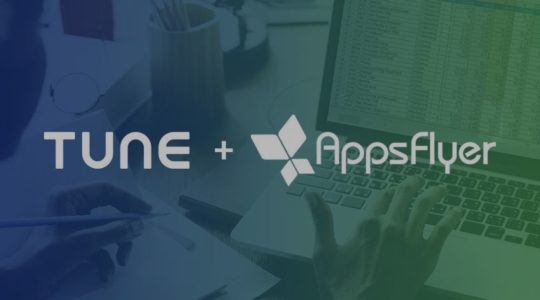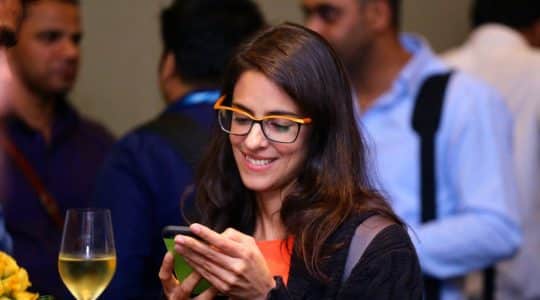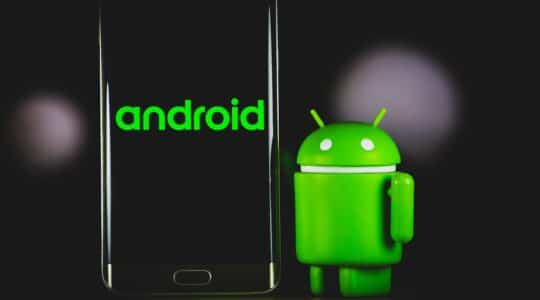
This year marked the first ever Mobile World Congress Americas. The event was held at San Francisco’s Moscone Center, attracting more than 20,000 visitors eager to get a glimpse into what’s in store for the future of mobile technology. App Valley, a day-long summit co-hosted by TUNE, Appnext, and Fetch, kicked off on the second day of the biggest mobile event of the year. Here are the key takeaways from the sessions.
State of the App Economy: 2017 & Beyond | Eric Seufert, head of platform, N3TWORK
Contrary to what tech publications say, apps are actually not dying. The old discovery paradigm was this: a user discovers the app on the App Store or Google Play, and then downloads the app to consume content. But the new discovery paradigm is different in that the user already has the app, and then comes across proprietary, third-party content … which leads them to discover the app again.
Users First, Apps Second: Connecting the Dots & Unlocking New Growth Levels | Elad Natanson, founder & CEO, Appnext
Users are looking for seamless discovery and instant usage. Some companies realized this trend early on, including WeChat, Uber, and Lyft. The common thread here is these companies understood that their content and services are ideal for being unbundled from apps and bundled into platform solutions. By embracing this trend and keeping the user at the center, these companies can maintain app engagement and compete for new attention wherever users are the most.
To provide seamless discovery and instant usage, think about timelines more than profiles. If an app leads a user to your app install, you can expect almost no new organic installs. Instead, focus on these questions: Where do your users find your instant app? Where do they access it from? Find the answer, and you’ll solve the problem of discovery.
Apocalypse or Renaissance? The Past, the Present & the Road Ahead (panel)
In the future a lot will change, but one thing won’t: We will still have handheld devices, just because using our fingers is so easy. The devices will get smaller and easier to use, and be much more efficient at the things we task them to do. The way we interact with content will also change. And while we’ll still have communication apps, users will be able to use other services instantly, instead of having to install software first.
Reinventing the App Wheel: Marketing Existing Models and Discovering New, Unexplored Growth Channels (panel)
Today, marketers face specific challenges with platforms like Google and Facebook. One of the biggest is that often install attribution on these platforms is not as accurate as other channels; marketers have seen 10-20% discrepancy on installs. That means buying ads on and from these platforms requires additional work — like looking at view-through attribution reports — to figure out who the 20% of additional unattributed customers are.
To bolster your current efforts on these platforms, set up a strategy for re-engagement with users who look like they are going to leave. Use cohort behavior to remarket to them through dynamic pricing or incentives. Keep in mind that the most important factor in re-engagement is having a third-party marketing platform that enables building a granular system to use data for retargeting.
AdTech Is Boring (panel)
Multi-touch attribution is something that needs improvement. As marketers and advertisers, we often get distracted by new tech and trends, and forget to focus on doing the right things with the stuff we already have. There are so many opportunities and possibilities with multi-touch attribution today. Take Google and Facebook: they can create a consistent, high-quality user experience. However, that is a very hard thing to do in our industry in an independent ecosystem.
We need to figure out a code on how to provide solid customer experience and solid technology that is connected to other pieces — which is difficult when you don’t have control over the pieces that make up the walled garden. Measuring experience and technology from the consumer’s happiness level is the approach that Google and Facebook have taken, and we need to try to refocus on taking that route.
The Customer Is Always Right: User-Centric Approaches to Monetization & Growth (panel)
While we know it’s vital to delight customers, you have to admit: Sometimes, it’s more important to know how to not piss them off than it is knowing how to make them happy. A/B testing helps answer this question.
When it comes to making your funnel more user-centric, A/B testing with different demographics and touchpoints is good, but what can really make a difference is how much data you have. For example, one panel speaker’s dream monetization funnel would be based on predictions — predictions about demographics, behaviors, interactions, everything. With the right amount of data, you could see exactly how your eventual paid users traveled through the funnel. Armed with that information, you can tailor your funnel to best fit future paid users based on the data and informed predictions you have about their customer journey.
The Era of App Installs Must End | Peter Hamilton, TUNE
The era of idolizing app installs is coming to a close. Instead of mastering the app install, tomorrow’s marketers need to make it their mission to master the buying cycle. The industry should reevaluate what kind of KPI is installs per month — a vanity metric.
Why? Installs are small indication of engagement. And there are multiple reasons why they’re overvalued and underperforming: We’ve seen a massive amount of money wasted on installs. Advertising fraud is becoming a bigger, pricier problem every year. App installs do not compute with marketing clouds, which is where everyone is heading. De-duping installs is flawed when ad networks are forced to compete on the last click. The list could go on … but you get the idea.
Author
Becky is the Senior Content Marketing Manager at TUNE. Before TUNE, she led a variety of marketing and communications projects at San Francisco startups. Becky received her bachelor's degree in English from Wake Forest University. After living nearly a decade in San Francisco and Seattle, she has returned to her home of Charleston, SC, where you can find her enjoying the sun and salt water with her family.




Leave a Reply
You must be logged in to post a comment.